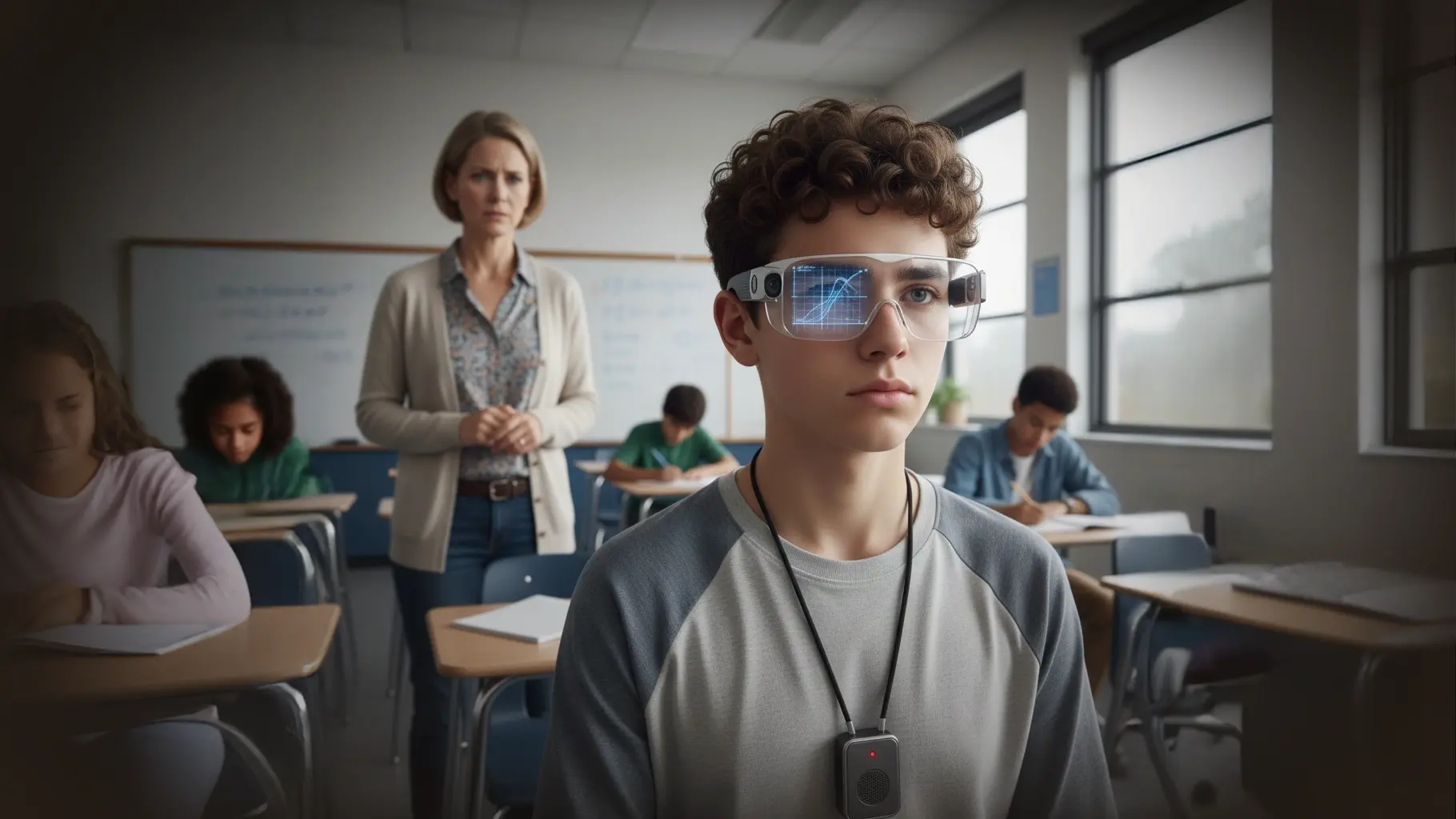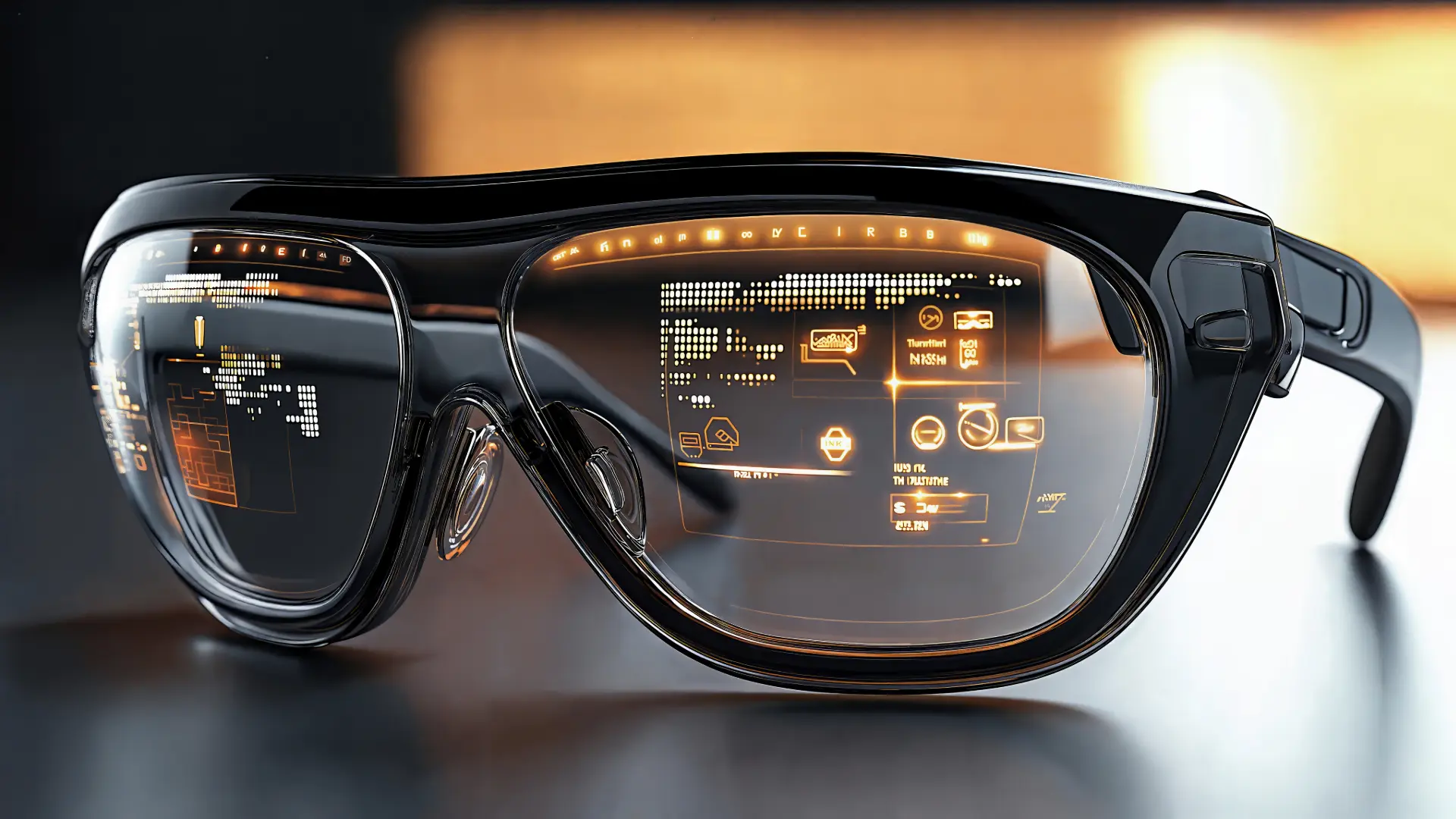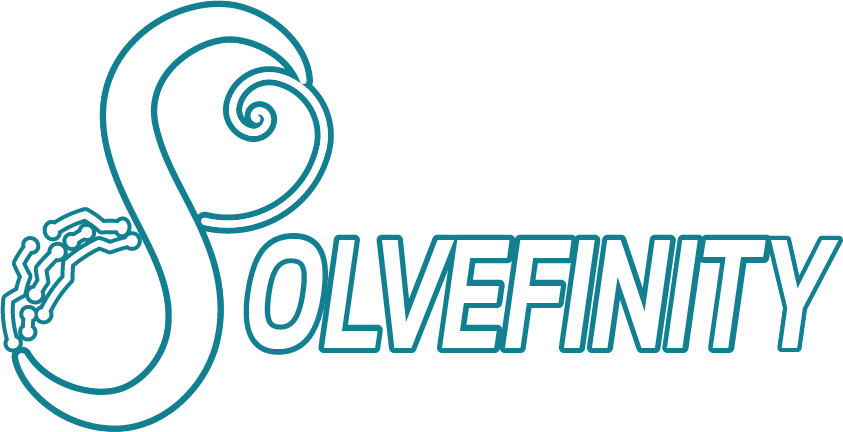
Coming Soon to a Classroom Near You? permalink
As AI-powered wearables like Plaud smart microphones and AI glasses begin to trickle into classrooms, educators are facing a new frontier. These tools offer unprecedented support for learners—real-time translation, automatic note-taking, and even visual overlays that could help students "see" math in new ways. But they also raise thorny questions: Who gets access? What happens to test security? And are teachers ready for their lessons to be recorded, transcribed, and possibly shared?
At Solvefinity, where we champion problem-based and inquiry-driven learning, we see both the potential and the pitfalls. I personally love AI, but as a classroom teacher, I also worry about the implications. Let’s unpack what’s at stake.
The Promise permalink
AI wearables could be game-changers for inclusive education.

- Multilingual learners could receive real-time translations of instructions and explanations, helping them engage more deeply in problem-solving.
- Students with executive functioning challenges might benefit from automatic transcription and summarization tools like Plaud, allowing them to focus on inquiry rather than note-taking.
- Adaptive overlays from AI glasses could scaffold complex math concepts like visualizing transformations or modeling equations in augmented reality.
These tools align beautifully with the goals of differentiated instruction and personalized learning. But only if used thoughtfully.
The Pitfalls permalink

Will it "do the math" for them? permalink
Students have always found a way to cheat. We've come a long way from passing notes in class, though. One of the major pain points of cell phones in classrooms (besides the distraction) has been students taking pictures of tests and sending the results to their friends. Especially since the pandemic, we've seen a steady rise in the use of apps that allow students to take a picture of an equation and be instantly given step-by-step results. I've personally had students in algebra hand in elegant calculus solutions before, only to be baffled that I was able to deduce that they used an app.
AI glasses could take this further, offering discreet access to answers during tests, solving problems in real time, or allowing a student to listen to a step-by-step walkthrough from a friend in another room.
Are teachers ready to be recorded? permalink
Besides the video recording capabilities of things like AI glasses, portable AI note-takers and apps are able to record, transcribe, and summarize entire lessons. While this could support absent students or those needing review, it also introduces:

- Concerns about intellectual property
- Fear of misinterpretation or misuse
- Legal questions around consent and privacy
Some argue teachers should embrace transparency. Others worry about surveillance culture creeping into the classroom.
The equity gap permalink
Not every student is going to have access to AI wearables. Without school-wide policies or funding, these tools could deepen existing inequities. This contradicts the very ethos of inquiry-based learning, which thrives on equity and access to exploration and discovery.
What Policies Exist? permalink
Most schools are still catching up. Here’s a snapshot of relevant laws and considerations:
| Policy/Law | What it covers | Implications |
|---|---|---|
| FERPA [1] | Protects student education records. | AI tools must not expose identifiable student data. |
| COPPA [2] | Regulates data collection from children under 13. | Parental consent required for AI tools collecting data. |
| State Recording Laws [3] | Vary by state. | Some require two-party consent for audio recording. |
| District Tech Policies | Often outdated. | Few address wearable AI or real-time capture. |
Educators need clear guidance—not just on legality, but on ethical use.
What Can Schools Do? permalink
To responsibly integrate AI wearables, schools should:
- Develop clear policies around recording, data use, and device access
- Train teachers on both the benefits and risks of AI tools
- Ensure equitable access through funding or device lending programs
- Reimagine assessment to focus on inquiry and reasoning instead of rote answers
In another post, I discuss whyMath is Messyand why we need to shift away from an emphasis on symbolic manipulation. The emergence of sophisticated AI tools makes this change that much more urgent.
Final Thoughts permalink
AI won’t replace the messy, beautiful process of mathematical inquiry. But it can support it if we’re intentional.
Imagine a classroom where every student, regardless of language or learning profile, can engage in rich problem-solving. Where tech scaffolds understanding, not shortcuts it. Where teachers feel empowered, not exposed.
That’s the future Solvefinity is working toward. But it starts with asking the right questions and building the right policies.
References permalink
- [1] U.S. Department of Education. (2023). Family Educational Rights and Privacy Act (FERPA).
- [2] Federal Trade Commission. (2023). Children’s Online Privacy Protection Rule (COPPA).
- [3] Digital Media Law Project. (2022). State Laws on Recording Conversations.
